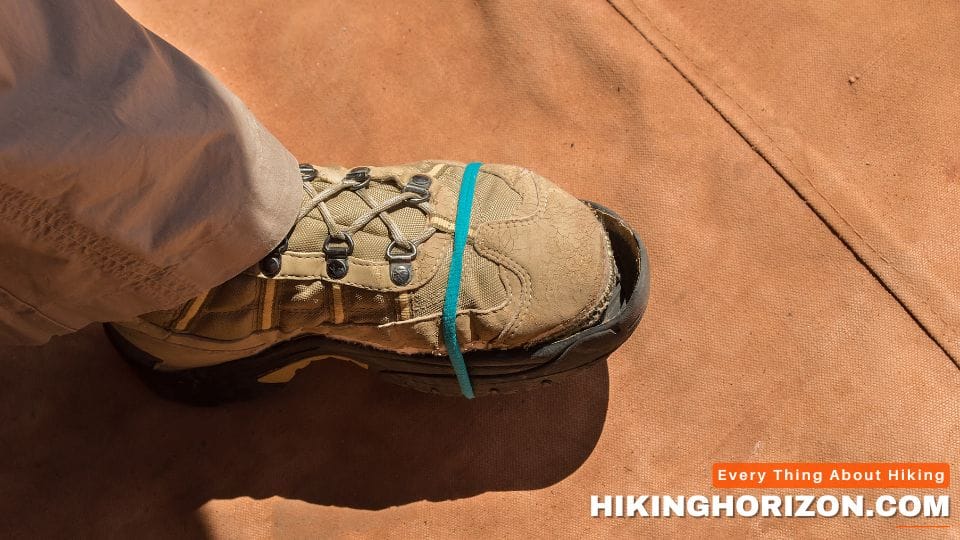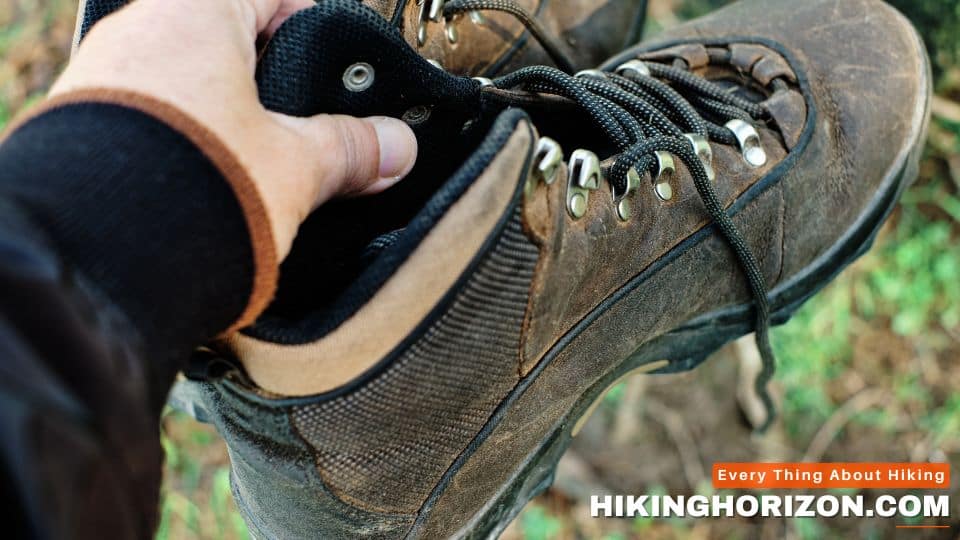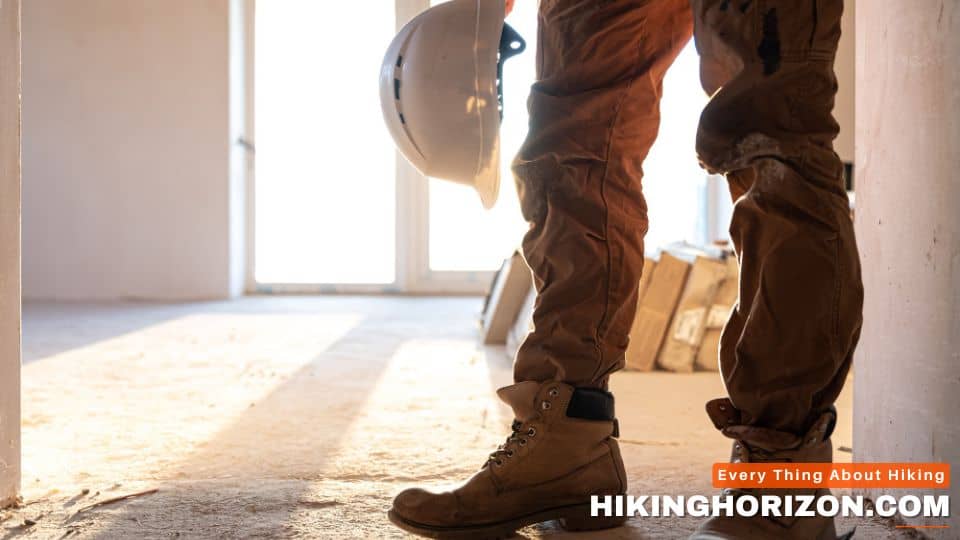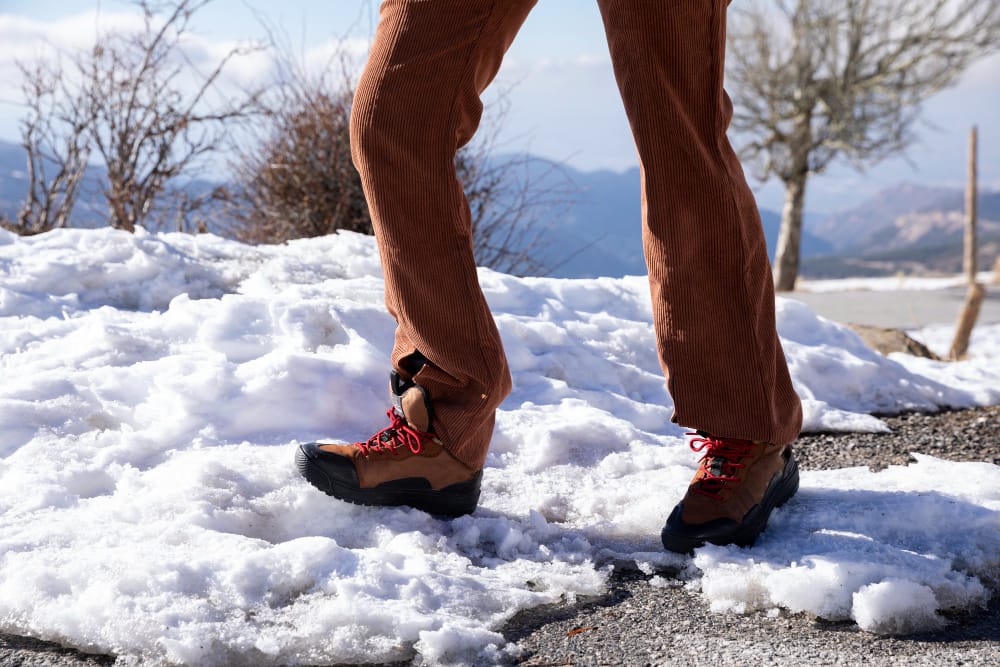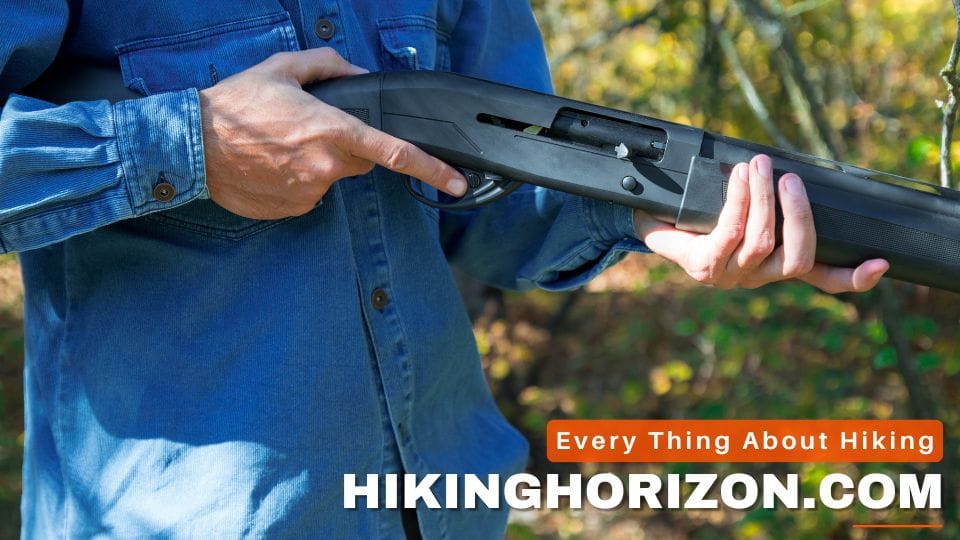
Hiking through the great outdoors can be one of life’s greatest joys. Taking in the fresh air and beautiful scenery and getting some exercise makes for a perfect day. However, as with any activity, there are risks involved when hiking, including injury, wildlife encounters, and, in rare cases, a potentially threatening person. So, should you carry a gun while hiking? There are good arguments on both sides of this debate. While guns may provide an extra layer of defense, they also come with risks and legal considerations that must be weighed carefully.
Handguns are the most common choice, as they can be easily carried in a holster while hiking. But pepper spray, knives, and bear spray are also options for defense on the trail. So, should you carry a gun while hiking? There are reasonable points to be made on both sides of this issue. Weighing the potential risks against the benefits can help you make an informed decision for your own situation.
Table of Contents
Why Should you Carry a Gun While Hiking?

Here are some of the main reasons why some hikers choose to carry firearms on the trail:
Defense Against Wildlife
Bear and mountain lion attacks on humans are very uncommon. But they do occur, especially when people startle the animals or get too close to their cubs or prey. From 2010-2018, over 600 people in North America were injured by black bears. Guns provide a last line of defense if you accidentally encounter aggressive wildlife on the trail. They allow you to scare the animal away or stop an attack if necessary.
Protection From Criminals
Though uncommon, some reports have been of hikers being attacked or murdered by criminals on remote trails. For women hiking solo, in particular, a handgun can offer some extra protection should the worst happen. Certain trails near the U.S.-Mexico border are also known as smuggling routes for cartels and, therefore, considered more risky.
Sense of Security
For some hikers, simply carrying a firearm provides peace of mind and a sense of security. It may be especially true for those hiking alone or in very remote areas. The confidence from having a form of protection can allow you to better focus on enjoying your hike.
Deterrent Effect
A visible holstered handgun sends a clear signal that the hiker is armed. It alone may deter a would-be criminal from targeting that person. Seeing that a hiker is not defenseless makes them less of an appealing victim.
Protection If Injured or Stranded
A gun could provide critical protection if you become stranded or incapacitated due to an injury on a trail. Fending off predatory animals or dangerous people may be impossible if you are stuck in one place and vulnerable. A firearm gives you an advantage you wouldn’t otherwise have.
Practicing Second Amendment Rights
The United States Constitution enshrines the right to keep and bear arms in the Second Amendment. Some hikers wish to exercise this right and choose to carry while enjoying public lands. They should not have to give up personal defense just to recreate outdoors.
Why Should not Carry a Gun While Hiking?

On the other hand, there are also some persuasive arguments why hikers may want to think twice about carrying firearms:
Risk of Accidents
Any time guns are present, there is the potential for accidents to occur – especially in rough terrain or wilderness areas. Accidentally dropping a loaded weapon could cause it to discharge. If improperly holstered, a gun could rub against rocks and brush, damaging the safety mechanism. The risk of accidents while hiking with a firearm is quite real.
Weight Considerations
Bringing a loaded handgun adds extra weight to your pack. Those extra pounds can add up when you exert yourself over miles of trail. Keeping pack weight down is key for enjoying multi-day backcountry hikes.
Legal Restrictions
Firearm laws vary greatly by location. Guns are prohibited in national parks and certain wilderness areas except for approved hunting seasons. Know the laws before you hike so you don’t end up facing criminal penalties.
Could Worsen Encounters
If a hiker misinterprets a bear’s motives and shoots at it, this may provoke a full attack from the wounded animal. Escalating a tense wildlife encounter into actual violence is more hazardous. It’s usually better to back away slowly and defuse the situation.
Morale Considerations
Some hikers do not wish to carry a lethal weapon to kill another living creature. They prefer to rely on their wits, avoid potential dangers, and only use force as an absolute last resort. Packing heat changes the whole mindset of a nature hike.
Risk of Theft
Leaving firearms in campsites or vehicles could allow them to be stolen – putting weapons in the wrong hands. But keeping them on your body at all times also presents challenges. Hiking with a holstered pistol may be fine, but it is difficult when rock climbing or swimming.
As we can see, there are reasonable arguments on both sides of this issue. While a valid case can be made for carrying firearms while hiking, doing so also involves taking on meaningful risks and responsibilities. Let’s take a closer look at some key considerations to help you decide if it’s the right choice for your situation.
pros and cons of carrying a gun while hiking
| Pros of Carrying a Gun | Cons of Carrying a Gun |
|---|---|
| Defense against wildlife attacks | Risk of accidents |
| Protection from criminals | Added weight to pack |
| Sense of security | Legal restrictions in some areas |
| Deterrent effect | Could escalate wildlife encounters |
| Protection if injured/stranded | Against some hikers’ personal values |
| Ability to exercise 2nd Amendment rights | Risk of theft |
| Provides defense in remote areas | Creates moral/legal responsibilities in using lethal force |
| Peace of mind hiking alone | Pepper spray seen as more effective against bears |
| Hiking during hunting season | Violates principles of some hikers seeking nature connection |
| Backup protection if bear spray fails | May give false confidence and encourage risk-taking |
Key Factors To Consider Before carry your gun on Hiking

Making a thoughtful decision about carrying a gun while hiking depends greatly on your individual situation. Here are some important factors to weigh:
Hiking Location
Consider the area you’ll be hiking in. Is it a desolate wilderness where dangerous wildlife is prevalent? Or is it a popular public park with heavy foot traffic? Remote and solitary areas tend to favor carrying a firearm more.
Group Size
Solo hikers or pairs face greater risks than larger groups. You don’t stand out as a potential victim as much when hiking with four or five companions. Evaluate your personal security based on who is joining you.
Hiking Distance
Long treks deep into the backcountry tend to present more potential dangers than short day hikes near parking lots. The further you’ll be from other people, the stronger the case for a defensive firearm.
Regional Dangers
Certain regions see more predatory wildlife (like Alaska or Montana) or have higher crime rates. This may justify carrying in areas statistically more hazardous for hikers. Know the local dangers.
Your Firearm Training
To use a gun defensively, you need to be accurate and confident under pressure. Get professional training on handling, drawing, and firing your weapon safely before carrying it on the trail.
Holster Comfort/Security
Whichever holster you select needs to be secure, comfortable for long distances, and keep the gun protected from the elements. Test it out on shorter hikes first before relying on it.
Legal Regulations
Almost all public lands prohibit hunting, target shooting, and firearms discharge outside designated seasons. You cannot wantonly fire a gun whenever you please, even in self-defense. Know the relevant laws.
Alternatives Available
Less lethal options like bear spray, trekking poles, knives, and whistles have advantages, too. Consider if one of these items would provide sufficient security without the risks of a firearm.
Evaluating these key factors will provide guidance on whether carrying a defensive pistol is prudent or not. The decision depends greatly on your individual hike plans.
Related Articles:
factors to consider if carrying a gun while hiking
| Factors to Consider | Details |
|---|---|
| Hiking location | – Remote wilderness vs popular park – Known dangers in area? |
| Group size | – Solo hikers/pairs more at risk – Safety in numbers if in larger group |
| Hiking distance | – Short day hike vs multi-day backcountry – Farther from help favors gun |
| Regional dangers | – Predator density and crime rates in area |
| Your firearm training | – Accuracy and confidence using gun needed – Get professional instruction |
| Holster comfort/security | – Test on shorter hikes first – Protect gun from elements |
| Legal regulations | – Know national park and wilderness area laws – State concealed carry permits |
| Alternatives available | – Bear spray, whistles, trekking poles, knives |
Why Hikers Do Not Carry A Firearm?

While defense is a valid concern, a number of hikers still opt not to carry firearms while on the trail. Some reasons why include:
Don’t Want The Responsibility
Hikers may be proficient with firearms but don’t want the moral and legal responsibilities that come with using lethal force against a person or animal – even in defense. Taking on that weight is more than they want on a nature hike.
Too Much Added Weight
After accounting for essential hiking gear, adding a loaded handgun and ammo is simply too much extra weight for many hikers trying to travel light and cover serious miles. They opt to leave guns out of their packs.
Firearm Accidents
Some hikers have personally known people injured by firearms accidents during other outdoor sports like hunting or camping. They choose to avoid potential misfires or other gun hazards while hiking on rough, remote terrain far from medical aid.
Rely On Bear Spray Instead
Studies show that properly deployed bear spray repels aggressive bears just as effectively as firearms. Bear spray is also lighter to carry, faster to deploy, and less hazardous to the user and others in the vicinity. Many hikers pick this alternative.
Believe Dangers Are Overblown
Statistically, wildlife attacks or violent crime affecting hikers is extremely rare. Hikers feel safer simply avoiding known hazards, traveling in groups, and relying on situational awareness rather than carrying firearms for unlikely worst-case scenarios.
Against Their Personal Values
Some hikers have strong personal or moral objections to carrying lethal firearms meant for killing. They cannot see themselves taking a life except in the most dire, unavoidable circumstances.
There are perfectly valid reasons why many hikers still shy away from carrying defensive firearms.
Alternative Ways to Stay Safe Carrying Guns

While carrying a gun may be one option for personal defense while hiking, several alternative strategies, and tools are available. These alternatives focus on non-lethal self-defense options, hiking in groups, and utilizing pepper spray, sticks, and trekking poles. Let’s explore these alternatives in more detail.
Non-lethal Self-defense Options
Non-lethal self-defense options offer alternatives to firearms while still providing a means of protection. These options include:
Pepper Spray
Pepper spray is a popular choice for self-defense while hiking. A non-lethal deterrent temporarily incapacitates the attacker by causing severe eye and respiratory irritation. When used properly, pepper spray can effectively deter wildlife and human threats. It is easy to carry and use and legal in most places.
Stick and Trekking Pole Usage
Utilizing hiking sticks or trekking poles as defensive tools can provide extra protection while hiking. These items can serve as improvised weapons in close encounters or as a means to create distance between you and a potential threat.
Stun gun or Taser
Stun guns and tasers are also non-lethal self-defense weapons that effectively stop an attacker. While guns are easy to carry and utilize, it’s important to note that they may not be as effective as pepper spray in certain situations.
Personal Alarm
A personal alarm is a compact, portable device that emits a loud, piercing noise when activated. Its purpose is to startle potential attackers and draw attention from others in the vicinity.
Knife
A knife can be used for self-defense, but it is important to remember that attackers can also use it. If you carry a knife, ensure you can use it safely and effectively.
Tactical pens
Tactical pens are sturdy and can be used in self-defense situations. They are also easy to carry and can be used as a pen.
Tactical flashlights
Tactical flashlights are bright and can disorient attackers, giving you time to escape or defend yourself.
Expandable batons
Expandable batons are lightweight and easy to carry and can be used to strike attackers.
Staying in groups
It is always advisable to hike in groups as it reduces the likelihood of being targeted for an attack. However, if you are hiking alone, it is essential to inform someone about your intended destination and the expected return time.
alternatives to carrying a gun while hiking
| Alternative | Details |
|---|---|
| Pepper spray | Non-lethal deterrent, causes eye and respiratory irritation Effective against aggressive wildlife and humans |
| Trekking poles/sticks | Can be used as improvised weapons in close encounters Create distance between you and threats |
| Stun gun/taser | Non-lethal weapons to stop attacker by shocking |
| Personal alarm | Emits loud noise to startle attackers and draw attention |
| Knife | Can be used for self-defense but also risks disarming |
| Tactical pen | Sturdy and can be used in self-defense situations |
| Tactical flashlight | Bright light can disorient attackers |
| Expandable baton | Lightweight but can strike attackers if needed |
| Hike in groups | Reduces likelihood of being targeted Safety in numbers |
| Situational awareness | Pay attention to surroundings Avoid known hazards |
| Deter predators | Make noise to announce presence Avoid surprising wildlife |
Why Carry a Gun When Hiking?

While potential dangers shouldn’t deter anyone from exploring the outdoors, there are some circumstances where carrying a firearm may provide an additional prudent layer of protection:
When Hiking Alone
Solo hiking removes the safety factor of traveling in a group. A handgun provides a measure of defense not otherwise available when you are alone on the trail.
In Remote Locations
Hiking deep in true backcountry with scarce cell service and far from other people, the emergency response could be very delayed if danger arises. A firearm bridges that gap.
Where Large Predators Are Common
In areas like Alaska, where large bear populations are prevalent, a firearm acts as insurance in case you have a sudden aggressive encounter with wildlife at close range where bear spray or other options are impractical.
During Hunting Seasons
Hiking while deer or elk hunting seasons are open means a greater chance of startling an armed hunter. Visibly carrying your own firearm helps avoid potentially dangerous mixups.
In High Crime Areas
Some parks and public lands, especially near urban centers, are known for higher vandalism rates, robberies, and assaults. Carrying a deterrent firearm in these recognized high-risk areas is reasonable.
While certainly not necessary for every situation, there are times and places where carrying a firearm could provide an additional prudent security option to supplement other safer hiking precautions. Use your best judgment.
Expert Hiker's Opinions

Cheryl Strayed
“My journey on the Pacific Crest Trail wasn’t about fear but about conquering personal demons and finding inner strength. I didn’t carry a gun, and I don’t think it’s necessary. What’s more important is to respect nature, maintain a clear mind, and be prepared in terms of knowledge and gear.”
Bear Grylls
“In my survival expeditions, having the right skills, knowledge and attitude often makes the difference. While I have been trained to use a firearm, it’s rarely my first choice when heading out into the wilderness. Planning, awareness, and adaptation are crucial.”
Andrew Skurka
“Carrying a gun isn’t part of my approach to hiking. Rather, I focus on minimizing risk by understanding the environment and potential dangers, carrying appropriate gear, and maintaining a strong physical condition. Firearms add weight and, unless properly trained, may give a false sense of security.”
Alex Honnold
“For me, climbing and hiking is a process of deep connection with nature. Carrying a firearm doesn’t align with that philosophy. It’s far more important to me to understand and respect the environments I enter, both for my safety and the preservation of these spaces.”
Aron Ralston
“Having survived a dire situation in the wilderness, I believe strongly in preparation and mental fortitude. A gun may seem like a safety measure, but real security in the outdoors comes from knowledge, experience, and the will to survive. In my opinion, these are far more valuable than a firearm.”
How to Carry a Pistol While Backpacking?
When hiking long trails like the Appalachian Trail, some backpackers and thru-hikers want to carry a handgun for protection. If you decide to bring a firearm, there are some important considerations.
First, make sure it is legal to carry a concealed pistol where you’ll be hiking by checking national forests, National Park Service, and state regulations. Select a small, lightweight gun that can be worn in a hip or chest holster while backpacking.
Train with your handgun so you’re comfortable and accurate if needed in a dangerous situation. Use proper carrying equipment like a holster and keep ammunition separate and the safety on. Consider also bringing deterrent sprays like bear spray.
While not all hikers agree on whether to carry a gun in the backcountry, do thorough research to decide what’s best for your situation.
How to Carry a Gun While Backpacking?
For backpackers who want to carry a firearm for protection on remote trails and in the backcountry, there are a few factors to consider. First, understand the legality – guns are typically allowed in National Forests with proper concealed carry permits, but not in National Parks.
Select a small handgun that won’t weigh you down, and get training to be accurate with it. Use a holster and other safe-carrying equipment. Consider alternatives like bear spray too. Research regulations for the areas you’ll be hiking. While the hiking community has mixed views on carrying guns, responsible backpackers will educate themselves on laws, train with firearms, and use good judgment. Make an informed decision on whether to carry after evaluating the risks and benefits.
FAQs About "Should you carry a gun while hiking?
Is it smart to hike with a gun?
Hiking with a gun is a personal choice. Some hikers believe carrying a firearm gives them protection on remote trails from dangerous wildlife or criminals. Others argue guns escalate risky situations and are unnecessary. Consider your skills, the area, and the laws, and weigh the pros and cons. Get proper training and practice using your firearm responsibly if you choose to carry it when hiking.
Why don’t hikers carry guns?
Many hikers opt not to carry guns while backpacking for several reasons. The extra weight of a firearm can slow you down. Some areas like National Parks prohibit guns, making it impossible to legally carry continuously on long trails. The hiking community is also divided on whether guns actually provide more safety. Additionally, most hikers will never need to use a weapon defensively on the trail. Bear spray and other precautions are considered effective and lighter alternatives.
Where is the best place to carry a gun while hiking?
If carrying a handgun hiking, a hip or chest holster allows you to access it quickly if needed. Make sure it is concealed and secure. Carry ammunition separately and keep the safety on until ready to use. Only draw your weapon in a true emergency requiring self-defense as a last resort.
What is a good gun to carry hiking?
Look for a lightweight, compact semi-automatic handgun in a caliber of 9mm if carrying while hiking. Smaller guns like Glock 43s are popular for being very portable but still powerful enough for defense against wildlife if needed. Make sure it fits your hands and you can shoot it accurately.
Do people carry guns on the Appalachian Trail?
It is legal to carry firearms on most sections of the Appalachian Trail if done lawfully according to relevant state and federal laws. However, the Appalachian Trail Conservancy discourages carrying guns. Some hikers still choose to conceal carry handguns for protection on remote sections of the trail where help may be far away.
Do hikers get shot by hunters?
Shootings involving hikers and hunters are extremely rare. Wearing bright colors and making noise can help you be visible. Hiking during hunting seasons does involve some risk, so research activity in the area you’ll be in. Getting lost or shot is still very unlikely if you take basic precautions.
What’s better bear spray or gun?
Studies show bear spray to be a more effective deterrent against bear attacks than guns. Spray doesn’t require precise aim under pressure and doesn’t risk further provoking aggression. It’s also lighter to carry. But in remote areas, some prefer to have a firearm as an absolute last resort against bears and other wildlife when spray fails.
Should I carry a gun in the grizzly country?
In grizzly territory, bear spray, noise makers, and other deterrents are recommended over firearms as the best way to avoid confrontations. However responsible gun owners who are very comfortable shooting accurately under stress may still choose to carefully conceal carry as an emergency backup. Getting surprised attacked is rare, so focus more on prevention.
Where do you aim at a charging bear?
If a bear is charging and you have no choice but to use a firearm in self-defense, aim for the center chest rather than the head. The chest offers a bigger target on a moving bear. Shooting accurately requires extensive practice under pressure. Do everything possible to avoid getting into that situation in the first place.
Will a gun stop a grizzly?
Large handgun rounds may wound or slow down an attacking grizzly bear if you manage to hit a vital area, but cannot be relied on to instantly stop one. Powerful bear spray able to impair vision and breathing is more likely to make a bear immediately disengage. Avoid close encounters, don’t run, and use deterrents other than guns first. Guns should always be an absolute last resort.
Conclusion
Hiking through remote wilderness areas, while rewarding, does involve some level of risk. A small percentage of hikers choose to carry firearms as a precaution should the worst occur. Approached responsibly and legally, hiking with a handgun provides an extra layer of defense from wildlife and criminals, or you become incapacitated. However, guns on the trail also come with meaningful downsides to consider, such as weight, reduced security if camping, and potential for accidents.
There are good faith arguments on both sides of this issue. Your personal decision whether to carry a firearm or not while hiking needs to reflect the unique factors of your situation. Consider the location, likelihood of specific dangers, your training, and alternatives available. With proper precautions, carrying a gun can offer extra protection from hazards. But it requires accepting additional responsibilities as well. With thorough planning and preparation, you can make the most informed choice for your needs and still enjoy this country’s magnificent wilderness.

MARK RODRIGUEZ
Mark is an experienced backpacker who has completed several multi-day hikes, including the John Muir and Wonderland Trail. He is also a hobbyist photographer who delights in capturing the captivating essence of nature through his camera lens. Mark is passionate about environmental conservation and often volunteers for trail maintenance and clean-up projects.

MARK RODRIGUEZ
Mark is an experienced backpacker who has completed several multi-day hikes, including the John Muir and Wonderland Trail. He is also a hobbyist photographer who delights in capturing the captivating essence of nature through his camera lens. Mark is passionate about environmental conservation and often volunteers for trail maintenance and clean-up projects.
